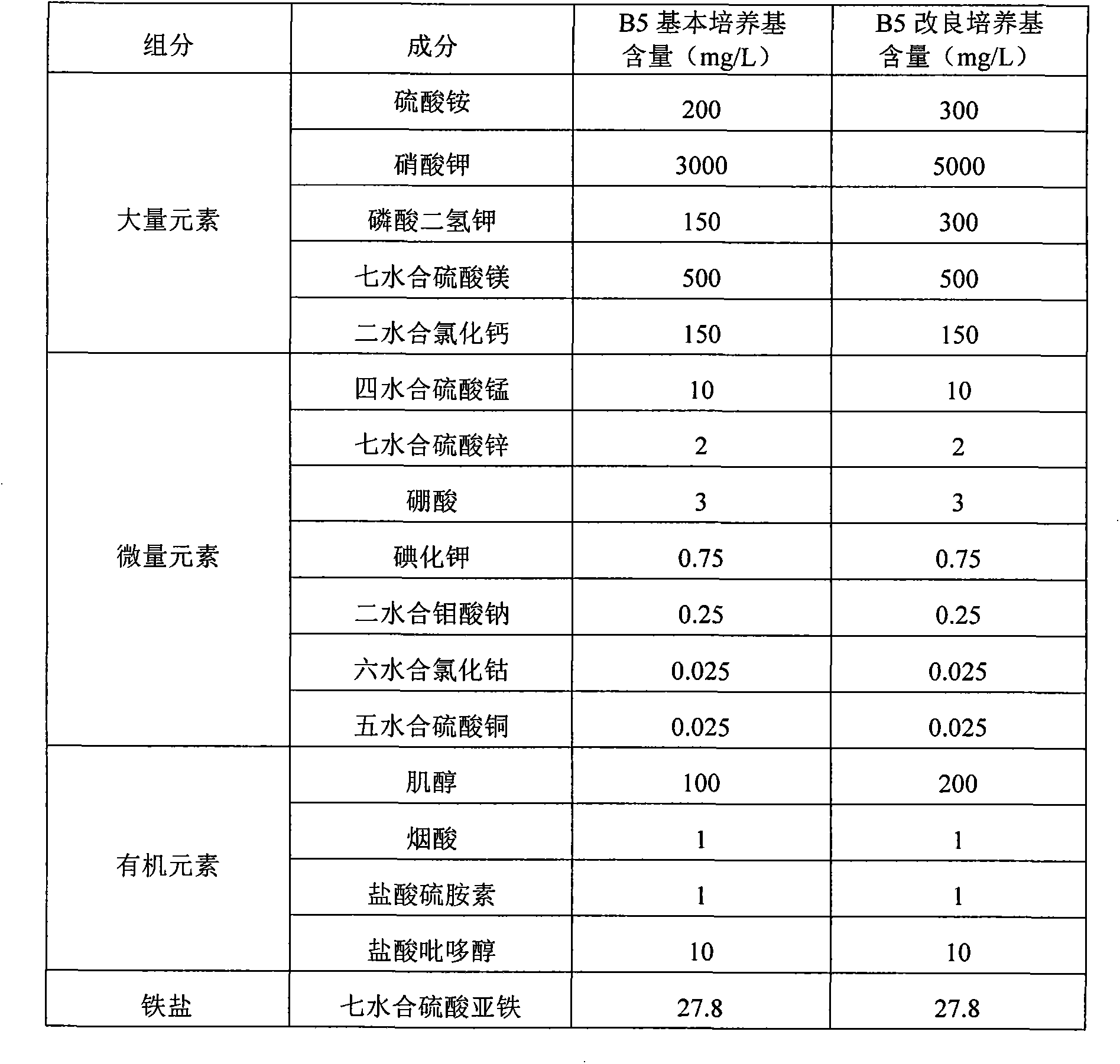An establishing method of a rosemary somatic embryogenesis and regeneration system
A method of establishment, the technology of rosemary, applied in the field of plant cell engineering, to achieve the effects of easy genetic engineering operation, normal plant development and uniform traits
- Summary
- Abstract
- Description
- Claims
- Application Information
AI Technical Summary
Problems solved by technology
Method used
Image
Examples
Embodiment 1
[0015] In this test, rosemary seeds imported from the United States were used. The rosemary seeds were soaked in tap water at room temperature for 10 to 15 hours, then sterilized with 70% alcohol for 2 minutes, washed twice with sterile water, and then rinsed with 0.1% alcohol. Sterilize the surface with mercury chloride (HgCl2) for 10 minutes, rinse with sterile water 5 times, use tweezers and a scalpel to cut out the embryos and inoculate them in a medium containing 6-BA1.3mg / L, 2,4-D4.5mg / L, 1200mg / L L hydrolyzed milk protein on the modified B5 medium (Table 1). The medium contains 30g / L sucrose and 7.0g / L agar. Use 1mol / L NaOH or HCl to adjust the pH value to 5.8-6.2, sterilize with high-pressure steam for 20 minutes, cultivate at 18-22°C, light-dark cycle 16h / 8h, light intensity 2500-30001x, relative humidity 70%-80%, Cultured for 20 days and replaced with fresh medium. The callus began to appear in 5 to 7 days, and the callus grew rapidly after 12 days. In addition to...
Embodiment 2
[0018] The culture procedures were all carried out according to Example 1, the difference being that the first stage added 6-BA4.5mg / L, 2,4-D4.3mg / L and 700mg / L, and the second stage was subcultured for the first time. , 4-D0.8mg / L, 6-BA is 0.9mg / L, the second subculture is 2,4-D0.9mg / L, 6-BA is 0.4mg / L, the third subculture is 2,4 -D0.2mg / L, 6-BA 0.8mg / L, in the third stage, transfer the embryogenic callus obtained by subculture to the B5 medium without growth regulators and supplemented with 600mg / L hydrolyzed milk protein conduct.
[0019] Table 1: B5 minimal medium (Gamborg et al., 1968) and modified medium components
[0020]
PUM
 Login to View More
Login to View More Abstract
Description
Claims
Application Information
 Login to View More
Login to View More - R&D
- Intellectual Property
- Life Sciences
- Materials
- Tech Scout
- Unparalleled Data Quality
- Higher Quality Content
- 60% Fewer Hallucinations
Browse by: Latest US Patents, China's latest patents, Technical Efficacy Thesaurus, Application Domain, Technology Topic, Popular Technical Reports.
© 2025 PatSnap. All rights reserved.Legal|Privacy policy|Modern Slavery Act Transparency Statement|Sitemap|About US| Contact US: help@patsnap.com

